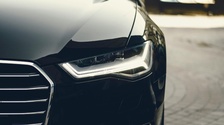italki English
Does "Attack on Titan" sound natural?
Isn't like saying attack on one titan? Don't these sound better? "Attack on (The) Titans" Or "Attacking (The) Titans"
(It's the name of a TV show. If you don't know it)
Nov 27, 2020 2:38 AM
Answers · 4
Hi there! I know this reply is a bit late but just to clear things up for everybody else's sake as the anime is coming to end. Attack on Titan is grammatically wrong and something that's lost in translation. It's because of the existence of the particle "no" の in original Japanese title Shingeki no Kyojin 進撃の巨人. To fully understand the mix up we have to dissect the phrase.
進 = enter, advance, or move forward
撃 = beat, attack, defeat, conquer
If we combine these two 進撃 , it'd mean something like Rage.
巨= huge, giant
人= man
Combine these two 巨人, we'd get gigantic man or Titans like the story implies.
So we basically got Rage and Giant, what about の "no"? This is where people get confused. Most people think の is just a possessive particle so they assume many things like Attack of Titans or Marching of Giants, without taking into consideration that the particle の has a wide range of uses like connecting nouns together. Therefore, Shingeki no Kyojin 進撃の巨人 simply translates to Rage Titan or Attack Titan (Eren's original titan power). Which actually makes sense considering that all other titan names follow the same syntax except for The Colossus Titan (超大型巨人 Chō ōgata Kyojin):
Founding Titan (始祖の巨人 Shiso no Kyojin)
The Armored Titan (鎧の巨人 Yoroi no Kyojin)
The Beast Titan (獣の巨人 Kemono no Kyojin)
The Cart Titan (車力の巨人 Shariki no Kyojin)
The Female Titan (女型の巨人 Megata no Kyojin)
The Jaw Titan (顎の巨人 Agito no Kyojin)
The War Hammer Titan (戦鎚の巨人 Sentsui no Kyojin)
The creator, Hajime Isayama though, thought that making it "Attack on Titan" for English viewers sounds cooler so he stuck with it. But we have to take into consideration that Isayama wasn't fluent in English at the time of its conception which is totally understandable.
Check out for more info about の: https://blogs.transparent.com/japanese/japanese-grammar-the-no-%E3%81%AE-particle/
PS. Did you see the latest episode? I still can't get over last week's The Rumbling. Lol
February 16, 2022
It's more like "Attack On/Charge On" titan : the titan of which the type is " Attack On"
Since in the manga/anime you discover that , eren's titan is named The "Attack On/Charge On" Titan, because he's viilent and charges forcefully into battle
November 27, 2020
Still haven’t found your answers?
Write down your questions and let the native speakers help you!
italki English
Language Skills
Chinese (Mandarin), English, French, German, Italian, Japanese, Korean, Spanish
Learning Language
English
Articles You May Also Like

Conflict at Work: How to Handle Disagreements in English
14 likes · 7 Comments

How to Give and Receive Constructive Feedback: Strategies for Success in the Workplace
65 likes · 21 Comments

10 American Car Idioms You Should Know
33 likes · 14 Comments
More articles
